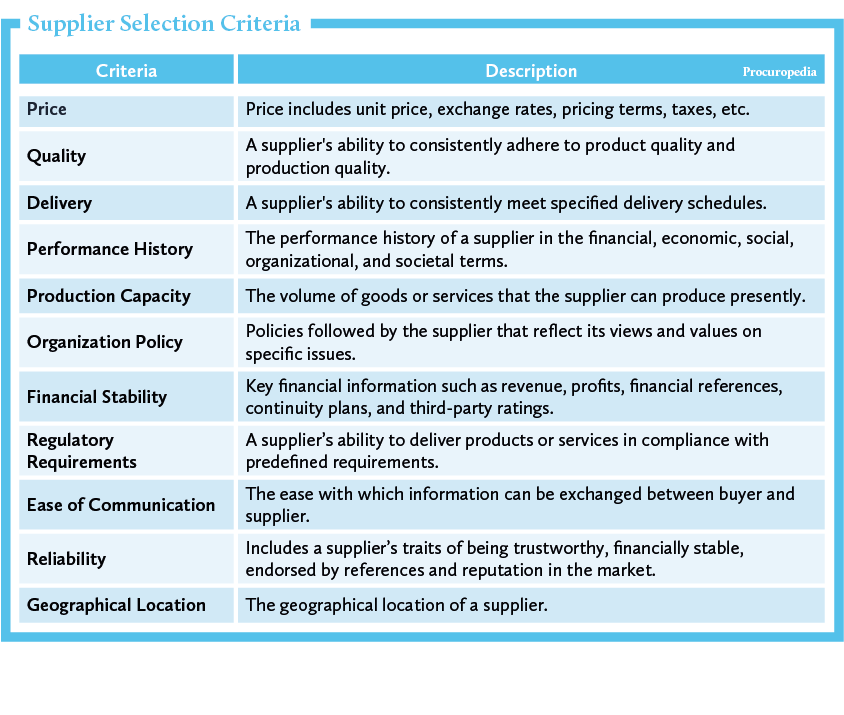Definition
Supplier selection is a critical decision-making process that aims to identify the most suitable supplier. The supplier selection process is essential and can impact an organization’s competitiveness whilst mitigating supply risks. Therefore, procurement professionals need to develop and deploy an effective supplier selection method, aligned to their organization to ensure the most appropriate suppliers are selected.
Need more help? Have a request? Please drop us a line...

